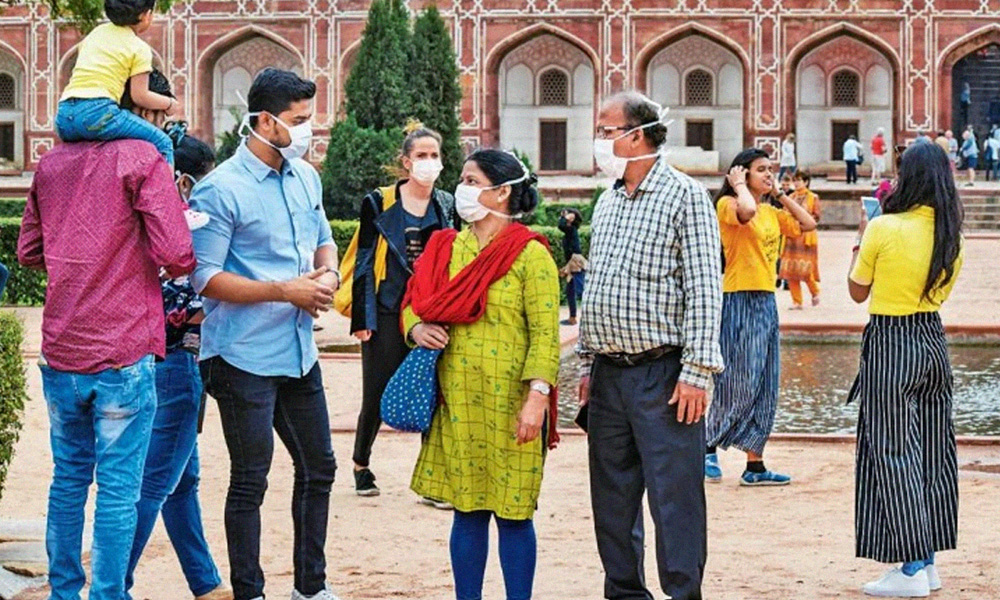
Image Credits: prameyanews7
Coronavirus Now A Pandemic: Know What It Means And How It Is Different From Epidemic
13 March 2020 11:53 AM GMT | Updated 13 March 2020 2:25 PM GMT
Editor : Shubhendu Deshmukh |
Shubhendu, the quint essential news junky, the man who loves science and politics in equal measure and offers the complete contrast to it by being a fan of urdu poetry as well.
By : Reethu Ravi
Reethu, a story teller, a person often found between the pages of a book or contemplating the nuances of life.
The World Health Organisation on Wednesday declared the novel coronavirus outbreak, which has spread to at least 114 countries around the world, a pandemic.
The World Health Organisation (WHO) on Wednesday, March 11, declared the novel coronavirus outbreak, which has spread to at least 114 countries around the world, a pandemic.
Globally, there are over 131,800 confirmed cases of COVID-19, and nearly 5,000 have died. In China, over 3,160 people have died from the virus, and there are over 80,700 confirmed cases.
Outside China, Italy and Iran are the worst affected with over 15,100 infections in Italy and over 10,000 in Iran. While Italy has reported at least 1,016 deaths, Iran has reported at least 429. To tighten the quarantine measures, Italy has ordered the closure of all but essential services and shops for two weeks. Meanwhile, South Korea has over 7,900 infections and at least 67 deaths.
"WHO has been assessing this outbreak around the clock and we are deeply concerned both by the alarming levels of spread and severity and by the alarming levels of inaction," WHO chief Tedros Adhanom Ghebreyesus said while addressing a media gathering in Geneva said.
"We have therefore made the assessment that #COVID19 can be characterised as a pandemic," he added.
🚨 BREAKING 🚨
— World Health Organization (WHO) (@WHO) March 11, 2020
"We have therefore made the assessment that #COVID19 can be characterized as a pandemic"-@DrTedros #coronavirus pic.twitter.com/JqdsM2051A
What Is A Pandemic?
According to the WHO, a pandemic is the worldwide spread of a new disease.
"An influenza pandemic occurs when a new influenza virus emerges and spreads around the world, and most people do not have immunity," says WHO.
"An epidemic that has spread over several countries or continents, usually affecting a large number of people," is how the US Centers for Disease Control and Prevention(CDC) defines a pandemic.
A pandemic is more likely if a virus is new. As most people have no previous exposure to the virus, they have little or no immunity to it. This enables the virus to spread from person-to-person easily.
"The word "pandemic comes from the Greek 'pandemos', which means everybody. Demos means the population, pan meaning everyone. So 'pandemos' is a concept where there's a belief that the whole world's population will likely be exposed to this infection, and potentially a proportion of them fall sick," Dr Mike Ryan, executive director of WHO's Health Emergencies Programme, was quoted by CNN.
Difference Between Pandemic And Epidemic
The term epidemic is used when there is a sudden increase in the number of cases of a particular disease. The CDC defines an epidemic as an "increase, often sudden, in the number of cases of a disease above what is normally expected in that population in that area."
Meanwhile, a pandemic is when the epidemic spreads across the world to various countries or continents, affecting a large number of people.
Major Pandemics Declared In The Past
According to the CDC, a pandemic happens rarely and has happened only three times in the 20th century.
Between 1817 and 1975, Cholera pandemics were declared multiple times. One of the major pandemics is the 1918 Spanish flu outbreak that killed around 20-50 million people.
A pandemic was declared for H3N2 that caused nearly a million deaths in 1968. The last pandemic was declared on June 11, during the H1N1 outbreak - the first to be declared in 40 years. The pandemic had resulted in 151,700 to 575,400 deaths worldwide during the first year it circulated.
Reasons For Declaring Coronavirus A Pandemic
In late February, while WHO had said that COVID-19 had the potential to become a pandemic, but it had not shown an uncontained global spread.
After China declared a public health emergency on January 30, the virus was largely limited to China. However, since then, it has shown a massive spread to at least 114 countries. As of now, there have been over 131,800 confirmed cases registered, and nearly 5,000 have died across the globe.
"In the past two weeks the number of cases outside China has increased thirteenfold, and the number of affected countries has tripled," said WHO Director-General Dr Tedros Adhanom Ghebreyesus at a press conference.
"In the coming weeks, we expect to see the number of cases, the number of deaths and the number of affected countries to climb even higher," he added.
What Changes Now?
While declaring the outbreak a pandemic, Ghebreyesus said that he was concerned by the "alarming levels of inaction" across the world. Declaration of a pandemic can drive the government to take more steps to contain the virus.
However, other than this, nothing much changes.
"Describing the situation as a pandemic does not change WHO's assessment of the threat posed by this coronavirus. It doesn't change what WHO is doing, and it doesn't change what countries should do," Ghebreyesus said.
"I remind all countries that we are calling on you to: activate and scale up your emergency response mechanisms; communicate with your people about the risks and how they can protect themselves; find, isolate, test and treat every Covid-19 case and trace every contact; ready your hospitals; protect and train your health workers. Let's all look out for each other," he added.
Also Read: Coronavirus Outbreak: 76-Yr-Old Karnataka Man First To Die In India
 All section
All section














